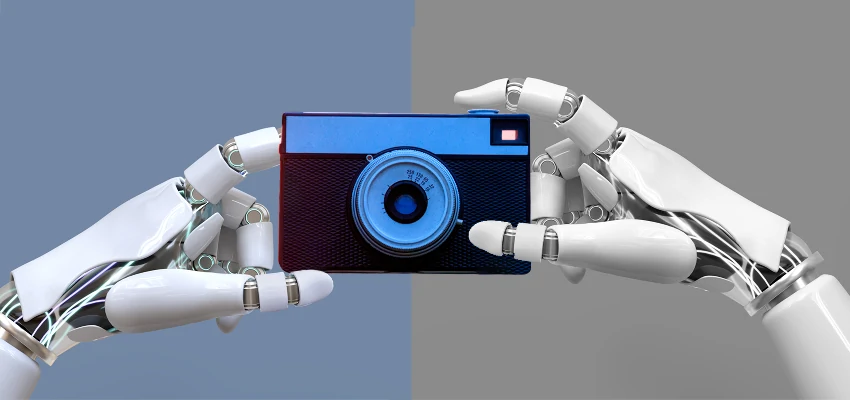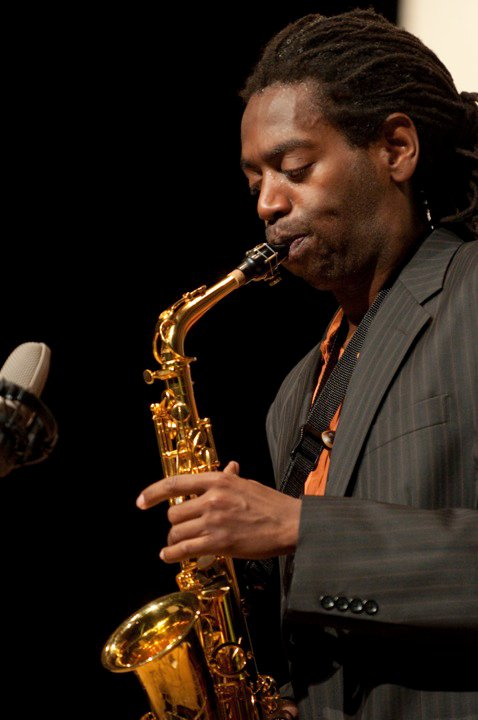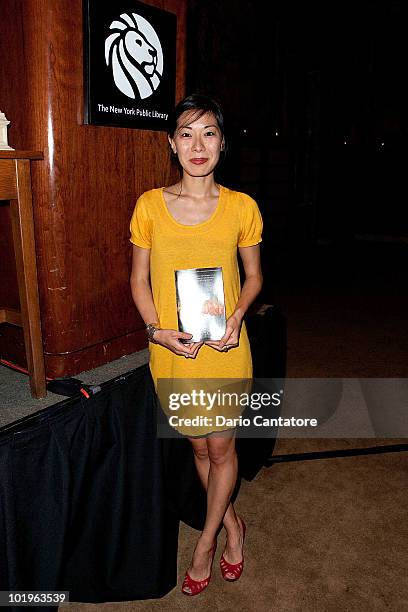
AI in Photojournalism: Preserving Visual History
AI in photojournalism is transforming the landscape of visual storytelling, offering exciting possibilities while also raising significant ethical challenges. As technology evolves, photography and AI seamlessly intertwine, reshaping how narratives are captured and shared across the globe. By leveraging advanced photojournalism technology, professionals can utilize AI tools to analyze, curate, and preserve extensive digital archives in photography, ensuring that crucial moments in history are not lost to time. However, this innovation also prompts questions about authorship, copyright, and the integrity of visual journalism, especially in an age where misinformation can spread rapidly. In navigating this new frontier, photojournalists must find a balance between harnessing AI to enhance their craft and safeguarding the principles of truth and authenticity.
The intersection of artificial intelligence and photojournalism is redefining visual communication as we know it. As we explore the role of technology in visual storytelling, it becomes essential to consider how advancements in AI and visual journalism can enhance the preservation of historical archives and narratives. With a growing emphasis on maintaining digital archives in photography, media creators and documentarians are tasked with ensuring that their invaluable work remains accessible and relevant. While AI presents exciting opportunities for improving the way we categorize and interpret visual content, it also raises critical discussions around copyright and the ownership of creative works. This dialogue is crucial for helping photojournalists adapt to new realities while remaining committed to their core values of memory and authenticity.
The Role of AI in Photojournalism Today
Artificial Intelligence (AI) is making a significant impact on the field of photojournalism, presenting both challenges and opportunities. From copyright concerns to the increasing prevalence of misinformation, these issues are pushing photojournalists to adapt to new technologies that can significantly alter the landscape of visual storytelling. With AI’s capacity to generate images and manipulate reality, many professionals fear for the future of authentic journalism. However, others argue that AI can be a valuable tool for enhancing creativity and preserving the integrity of photojournalism in the digital age.
Kira Pollack, an Emmy award-winning visual storyteller, sees potential in AI to not only tackle these challenges but also to preserve the legacy of photojournalism. Her research into how AI can facilitate archive preservation highlights AI’s role in organizing and contextualizing images that tell the visual history of our world. By harnessing the power of technology responsibly, photojournalists can ensure their vast collections are not just safeguarded but also brought to life for future generations to witness and understand.
Preserving Photo Archives: The Importance of Digital Technologies
The preservation of photo archives is crucial for future generations to access and learn from historical events. Despite the perception that libraries of images are outdated, they are living entities that capture and narrate the world’s history. With an estimated 95% of photos taken by photojournalists remaining unpublished, many invaluable narratives risk being lost if not properly cared for. Embracing digital technologies, including AI, opens new pathways to preserve and access these archives efficiently, ensuring that authentic stories and the emotions behind them are not forgotten.
Moreover, Pollack’s innovative approach to using AI tools could revolutionize how archival photographs are curated and shared. By employing AI to identify, catalog, and contextualize images, photojournalists can enhance the discoverability and relevance of their work. This process not only bolsters the emotional impact of the images but also champions the stories of the individuals behind them. Ultimately, integrating digital technologies into photojournalism practices can help maintain the importance of preserving visual history in our rapidly evolving society.
Navigating Ethical Concerns with AI in Visual Journalism
As AI continues to evolve, ethical conversations around its application in photojournalism have become increasingly important. Concerns surrounding authorship, copyright, and the potential for misuse of images have prompted calls for a more responsible approach to technology in visual storytelling. Many in the industry fear that the AI landscape could dilute trust in journalistic integrity, allowing misinformation to flourish. Therefore, establishing ethical guidelines and protocols is essential to navigating the consequences of AI’s expansion in photojournalism.
Pollack emphasizes that her research exists in a unique space, focusing not on the generative aspects of AI but rather its potential for preserving and enhancing real photojournalism. This ethical consideration underscores her commitment to utilizing technology for good—safeguarding photographers’ rights, their creative intentions, and ultimately reinforcing the truthfulness that visual journalism represents. As the journalism community grapples with AI’s complexities, grounding its application in ethical standards will be necessary to ensure that the core values of photography endure.
The Future of AI-Driven Photojournalism
As the photojournalism industry looks ahead, the integration of AI could lead to groundbreaking developments in how stories are visually told. With an ever-increasing volume of images being captured daily, AI stands to assist photojournalists in filtering through and analyzing large datasets, allowing for more streamlined workflows and innovative storytelling. This capability not only enhances the creative process but also provides opportunities to uncover hidden narratives that might otherwise be overlooked.
However, this future must be approached with careful consideration. Relying too heavily on AI technologies can risk diminishing the unique human perspectives that define photojournalism. Therefore, collaboration between technologists and photojournalists will be integral to navigating this transition effectively. Ensuring that the authentic voice and artistic contributions of human photographers are complemented—not replaced—by AI will be key to shaping a future where AI in photojournalism is both innovative and respectful of its rich heritage.
Technological Advancements in Photography and AI
The intersection of technology and photography has continually evolved, and AI presents a major leap forward in how images can be captured and utilized. Innovations like machine learning and deep learning have enabled AI systems to analyze images with remarkable accuracy, identifying subjects, emotions, and even complex compositions. These advancements not only allow for enhanced storytelling through photography but also provide tools for photographers to better understand their craft and audience.
Understanding AI’s implications for photography is crucial, as it poses both creative opportunities and ethical dilemmas. For instance, while AI can streamline the editing process and improve the accessibility of photo archives, it also raises concerns about the authenticity of images produced. Expert practitioners like Pollack advocate for a balanced approach that appreciates the potential of AI in enhancing visual storytelling while remaining vigilant against the pitfalls that may arise.
The Importance of Collaboration Across Disciplines in Photography
In addressing the challenges posed by AI to photojournalism, interdisciplinary collaboration is essential. Engaging with technologists, ethicists, and fellow journalists fosters a more comprehensive understanding of how AI can be employed responsibly in visual storytelling. By sharing insights and addressing concerns from multiple perspectives, stakeholders can develop effective strategies for integrating AI while preserving the core values of photography.
Pollack’s fellowship at the Shorenstein Center exemplifies the importance of such interdisciplinary dialogues, as cross-disciplinary engagements can yield innovative solutions to pressing concerns in photojournalism. This collaborative approach not only enriches the conversation about AI’s role but also empowers photojournalists to navigate the evolving landscape confidently, ensuring that genuine narratives and the artistry of photography are upheld even in the face of advancing technology.
AI’s Impact on Historical Documentation Through Photography
The documentation of historical events through photography plays a crucial role in shaping society’s understanding of the past. AI’s capabilities can enhance historical documentation efforts by providing tools that help historians and journalists analyze vast photo archives efficiently. By utilizing AI to assess and categorize images from pivotal moments in history, researchers can ensure that these events are presented accurately and in context—preserving the stories for posterity.
Furthermore, the integration of AI in analyzing historical photographs could also facilitate new generations of visual storytelling. This technology could render previously inaccessible archives more discoverable, encouraging renewed interest in archive-based storytelling. By bridging the past with present narratives, AI not only aids researchers but also connects audiences with the profound impact that historical photography has on cultural collective memory.
Exploring AI’s Shortcomings in Visual Storytelling
Despite the promising applications of AI in photography, the technology does have limitations that must be proactively addressed. These shortcomings, particularly in interpreting nuanced human emotions and complex narratives, pose significant challenges to achieving authentic visual storytelling. For instance, while an AI can recognize certain elements within a photo, it may struggle to grasp the subtleties of human experiences depicted in the image.
Pollack’s work is focused on identifying these limitations and understanding how they impact the overall integrity of photojournalism. It is critical for photojournalists to maintain agency over their narrative and ensure that AI complements their work rather than undermining it. As the field adapts to the presence of AI, an emphasis on addressing these technological shortcomings will be vital for preserving the authenticity and emotional resonance of visual storytelling.
Balancing Innovation and Ethics in AI-Driven Visual Journalism
As AI technologies continue to evolve, balancing innovation and ethics in photojournalism becomes increasingly complex. The excitement surrounding AI’s capabilities must be tempered with careful consideration of the ethical implications associated with its use. Educating the photojournalism community about the potential pitfalls is critical to fostering a culture of responsible technology use—one that prioritizes truth and integrity over sensationalism.
Pollack envisions a future where AI serves as an enhancer rather than a replacement, enabling photojournalists to uphold their principles while harnessing innovation. By establishing clear ethical guidelines and fostering continuous conversation, the photojournalism industry can embrace AI’s potential while safeguarding the authenticity that defines the art form. In doing so, visual journalists can contribute positively to the ever-evolving landscape of digital media.
Frequently Asked Questions
How is AI revolutionizing photojournalism technology?
AI is revolutionizing photojournalism technology by enhancing image analysis and management. Tools powered by AI can automatically catalog and archive vast collections of images, ensuring that important visual records are preserved and easily accessible for future generations. Moreover, AI can assist journalists in sifting through digital archives in photography, allowing for faster and more efficient discovery of relevant visuals that tell compelling stories.
What are the ethical implications of using AI in visual journalism?
The ethical implications of using AI in visual journalism include concerns over copyright, authorship, and the potential for misinformation. As AI systems require large datasets for training, there is a risk that they may inadvertently use copyrighted images without the consent of the original photographers. Additionally, as AI-generated content becomes more prevalent, it raises questions about the authenticity of visual journalism and the trustworthiness of the images presented to the public.
Can AI help preserve photo archives in the age of digital journalism?
Yes, AI can significantly help preserve photo archives in the digital age by automating the process of sorting, tagging, and organizing images. This ensures that crucial historical documents, often at risk of being lost, remain intact and easily accessible. AI technologies can also enhance the usability of digital archives in photography by making it easier to locate specific images based on various criteria, thus safeguarding important visual narratives.
What role does AI play in the future of visual storytelling in photojournalism?
AI plays a pivotal role in the future of visual storytelling in photojournalism by enabling deeper storytelling through enhanced image analysis and contextualization. By providing insights into the emotional and contextual elements of photographs, AI can help journalists present more nuanced narratives. Additionally, as AI tools become more sophisticated, they may assist photojournalists in identifying trends and patterns in visual storytelling, elevating the craft and its impact on society.
What challenges do photojournalists face with the introduction of AI technologies?
Photojournalists face several challenges with the introduction of AI technologies, including the potential erosion of trust in visual content as generative AIs produce hyper-realistic images. There are also competing concerns about copyright and the integrity of the photographic record, as unauthorized use of images for AI training raises serious ethical questions. Furthermore, the risk of misinformation can undermine the credibility of photojournalism, making it vital for professionals to navigate these challenges thoughtfully.
How can AI improve the accessibility of visual journalism archives?
AI can improve the accessibility of visual journalism archives by using machine learning algorithms to categorize and index images effectively. This allows users to search for specific visual content through keywords and concepts, making the vast troves of unseen images from photographers readily available. As a result, AI not only preserves the visual history of photojournalism but also democratizes access to these important resources for audiences and researchers alike.
In what ways can AI aid in curating historical photojournalism material?
AI can aid in curating historical photojournalism material by analyzing images and providing contextual information that helps to frame the narratives behind them. Through intelligent tagging and categorization, AI can highlight significant events, identify key themes, and even assist with creating immersive experiences that connect viewers to the historical significance of the photographs. This not only enriches the storytelling aspect of photojournalism but also fosters a deeper understanding of visual history.
What future developments can we expect in AI and visual journalism?
Future developments in AI and visual journalism are likely to include increasingly sophisticated image recognition technologies and enhanced data analytics capabilities. As AI continues to evolve, we may see more integration of immersive technologies such as virtual reality and augmented reality in visual storytelling. Moreover, ongoing dialogue among technologists, ethicists, and journalists will be crucial in addressing the challenges AI presents, ensuring that the core values of photojournalism—truth, authorship, and memory—are upheld.
| Key Points |
|---|
| AI poses both threats and opportunities for photojournalism, affecting copyright, misinformation, and legacy preservation. |
| Kira Pollack emphasizes the need to understand and harness AI for good while protecting the integrity of photojournalism. |
| Current photo archives are at risk of being lost, and AI could play a role in preserving these valuable resources. |
| AI can analyze complex imagery and offer insights that enhance understanding of historical contexts, thus serving as a valuable tool. |
| Collaboration between technologists and photojournalists is essential to address the ethical concerns surrounding AI usage. |
| The Shorenstein Fellowship aims to explore the relationship between AI, photography, and journalism focusing on core values. |
Summary
AI in photojournalism is transforming the landscape of visual storytelling. While it presents challenges like copyright issues and misinformation, it can also empower photographers to preserve their archives and enhance their work. Kira Pollack’s efforts emphasize the importance of utilizing AI responsibly to maintain the integrity of historical records, ensuring that the art of photojournalism thrives in this new era. By fostering collaborations between technology and journalism, we can navigate the complexities of AI while reinforcing the core values of truth and memory in photojournalism.


